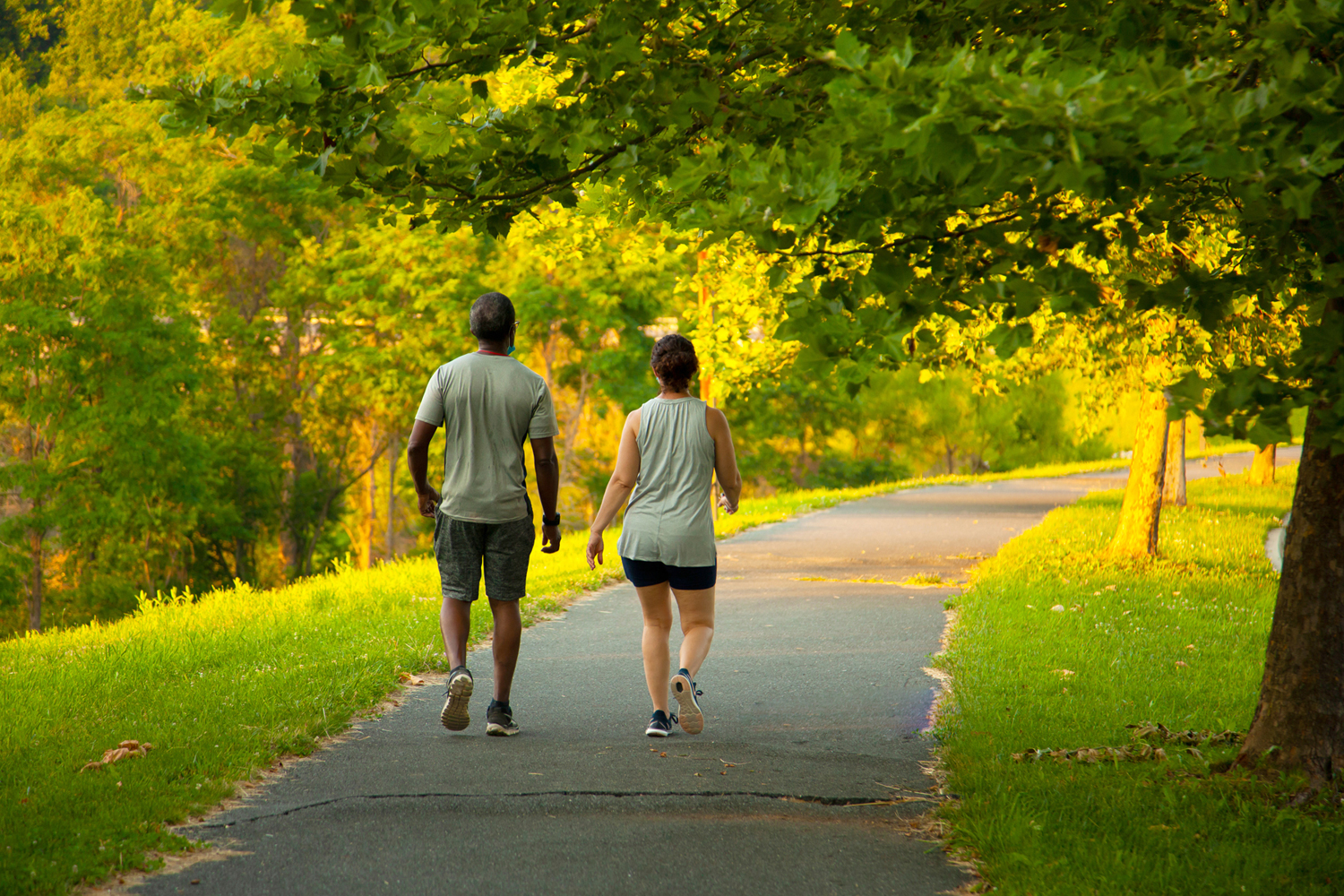ABOUT A THIRD OF ADULT CANCER SURVIVORS don’t exercise at all and miss out on its many benefits. In the short term, aerobic exercise diminishes the side effects of cancer and cancer treatment, such as fatigue, anxiety and depression, says Alpa Patel, a cancer epidemiologist with the American Cancer Society.
The American Cancer Society’s guidelines for aerobic exercise “can be intimidating,” says Kylie Rowed, an exercise physiologist at Memorial Sloan Kettering Cancer Center in New York City. Rowed offered some tips that can help people start and stick with a walking routine:
- Find a walking partner.
- Schedule walking like any other commitment.
- Work walking into your existing routine.
- Use an activity monitor like a smart watch to track your progress. Set reasonable goals.
“Fairly quickly, you start to see improvements in your physical functioning once you start being more active,” says Karen Basen-Engquist, a professor of behavioral science at the University of Texas MD Anderson Cancer Center in Houston. Long-term aerobic exercise has been associated with improved survival, specifically in patients with breast, colorectal and prostate cancers. It’s also associated with a lower risk of cancer recurrence.
For people seeking more aerobic exercise, walking is a good place to start, Patel says. “Walking is safe and easy to do. You don’t need any specialized equipment, you just need your shoes, and you can do it virtually anywhere.”
The American Cancer Society recommends that adults get at least 150 minutes of moderate-intensity exercise, such as brisk walking, or 75 minutes of vigorous-intensity activity each week. But you don’t have to meet the guidelines to benefit.
There are many ways to start moving for exercise if walking is not an option.
For some people, walking is not an easy option. But it’s possible to get aerobic exercise without walking, says Kylie Rowed, an exercise physiologist at Memorial Sloan Kettering Cancer Center in New York City. People who can’t move their legs can get exercise by moving their arms, for example, by lifting dumbbells or doing jumping jacks with just the arms. People who can use their legs but have difficulty walking might benefit from exercises in water. Patients should speak with their doctors about what exercises will be safe and appropriate for them.
In a study of walking and mortality led by Patel and published in the American Journal of Preventive Medicine in October 2017, people who walked at lower-than-recommended levels had a 21% lower risk of premature death by any cause than people who were inactive. A study published in JAMA in March 2020 reported that the more steps people took per day, even at levels below the recommended 10,000 per day, the lower their risk of premature death by any cause or by cancer. “Going from doing nothing to doing something, even if it’s not that optimal amount per day, there is a benefit to it,” Patel says.
Cancer Today magazine is free to cancer patients, survivors and caregivers who live in the U.S. Subscribe here to receive four issues per year.





